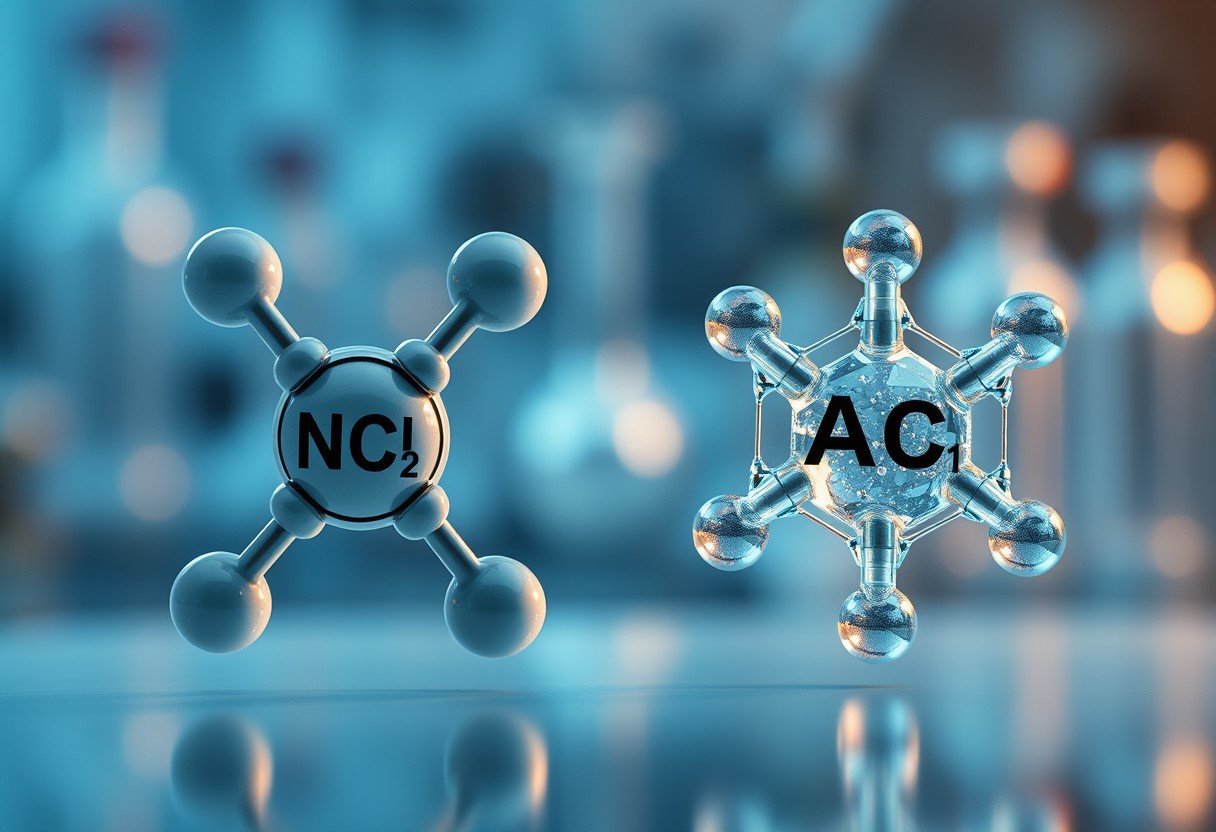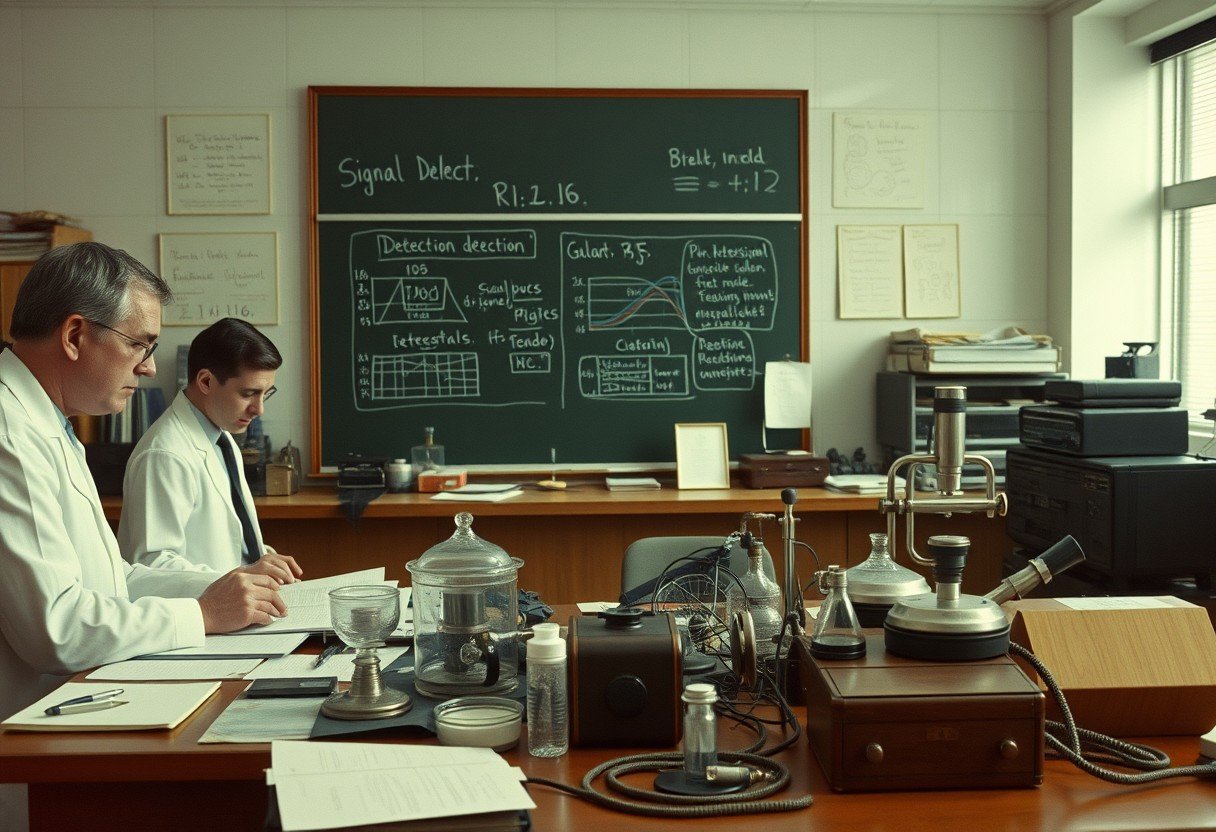Nitrogen trichloride and aluminum chloride look similar on paper, but they follow different naming rules. Here is what they are, where they show up, who named them, when rules apply, how the names are built, and why the names differ. This guide shows how to read chemical names fast and clear so you can use them with confidence in school, lab, or industry.
What Naming Rules Do Chemists Use
Chemists use IUPAC rules to keep names clear across languages and fields. These rules tell us how to name simple salts, covalent molecules, acids, and more. Common names still exist, but the systematic name removes doubt.
The key first step is to decide if a compound is molecular or ionic, because that choice sets the naming rule.
Ionic names use the metal name and the nonmetal as an ide ending, like sodium chloride. Molecular names use prefixes such as mono, di, and tri to show atom counts, like carbon dioxide. With that in mind, NCl3 and AlCl3 fall into different buckets for naming.
Molecular Vs Ionic Compounds At A Glance
Molecular compounds form when two nonmetals share electrons. Ionic compounds form when a metal and a nonmetal trade electrons to make ions that attract each other.
- Molecular names use prefixes to show how many atoms are present.
- Ionic names do not use prefixes because the ratio comes from ion charges.
NCl3 is nitrogen plus chlorine, both nonmetals, so it is named with prefixes as nitrogen trichloride. AlCl3 has a metal, aluminum, so it follows the ionic style and becomes aluminum chloride. In practice, solid AlCl3 has covalent dimers Al2Cl6, yet the naming still follows the metal plus nonmetal rule.
Why We Say Nitrogen Trichloride For NCl3
NCl3 is a binary molecular compound made of one nitrogen and three chlorines. The prefix tri shows the count of chlorine atoms. The full name is nitrogen trichloride.
In NCl3, nitrogen has an oxidation state of plus 3. The molecule is trigonal pyramidal and polar. At room temperature it is a yellow oily liquid with a boiling point near 71 Celsius and a sharp odor.
NCl3 is sensitive and can explode if shocked or in bright light, so small amounts only and good ventilation are vital.
Trace NCl3 can form when chlorine reacts with ammonia in pools and water plants, which is why careful control of water chemistry matters. It is not widely used because safer chlorine agents exist.
Why We Say Aluminum Chloride For AlCl3
AlCl3 is named by the ionic rule because aluminum is a metal with a common charge of plus 3. The name uses no prefix, so it is aluminum chloride. There is no need to say trichloride in this case.
Solid AlCl3 is a white to pale yellow solid that sublimes near 180 Celsius. In the solid state it forms dimers written as Al2Cl6. In the melt or in water it forms ionic species.
AlCl3 is a strong Lewis acid and a classic catalyst for Friedel Crafts reactions in the chemical industry.
It is also hygroscopic and reacts with moist air to release HCl, so dry storage and sealed containers are best practice in labs and plants.
How To Pick The Correct Name In Seconds
You can choose the right naming style fast with a simple check. This quick method prevents the most common classroom and lab errors.
- Look for a metal. If present, use the ionic style name without prefixes.
- If no metal is present, use molecular prefixes like mono, di, tri for each element.
- If the metal can have more than one charge, add a Roman numeral, like iron(III) chloride.
- Check for known exceptions or common names only after the systematic name is set.
This four step scan covers the vast majority of names you will meet in school and entry level lab work.
Practice with examples helps the rule stick: CO is carbon monoxide, CO2 is carbon dioxide, AlCl3 is aluminum chloride, and NCl3 is nitrogen trichloride.
Side By Side Comparison Of NCl3 And AlCl3
Seeing both compounds next to each other makes the naming difference clear. The atoms look similar in the formula, but the bonding and rules are not the same.
| Feature | NCl3 | AlCl3 |
|---|---|---|
| Type | Molecular compound | Metal plus nonmetal, named as ionic |
| Systematic Name | Nitrogen trichloride | Aluminum chloride |
| Oxidation State | N at plus 3 | Al at plus 3 |
| Structure | Trigonal pyramidal molecule | Al2Cl6 dimer in solid, Lewis acid |
| Physical State, 25 C | Yellow oily liquid, bp about 71 C | White solid, sublimes near 180 C |
| Key Use | Limited, research only | Catalyst in organic synthesis |
| Risk Note | Unstable and explosive when pure | Reacts with water to give HCl |
Both have chlorine, yet the different bonding class is why one gets a prefix and the other does not.
This table mirrors the long form rules in a compact way you can review before tests or lab prep.
Common Pitfalls And Exceptions You Should Know
Do not use prefixes with ionic names. For example, NaCl is not sodium monochloride. The ratio is fixed by ion charges, so prefixes are not needed.
Metals with more than one common charge need a Roman numeral. FeCl2 is iron(II) chloride and FeCl3 is iron(III) chloride. Copper shows the same pattern with copper(I) and copper(II) salts.
AlCl3 is often covalent in the solid state, but its name still follows the metal plus nonmetal rule that is used for salts.
Historic names can linger, such as muriatic acid for HCl. For clear search and safety labels, use the IUPAC or widely accepted modern name first.
Safety Notes And Real World Context
NCl3 should only be made and handled by trained people in small amounts with shields and good ventilation. It can detonate and irritate eyes and lungs. Pool operators monitor combined chlorine to avoid its build up.
AlCl3 should be kept dry and cool. It reacts with water to form acidic fumes, so wear gloves and eye protection. Waste rules differ by region, so follow local laws and safety data sheets.
Simple names help speed up safe work, but always read the safety data before use and match the name to the exact chemical grade and form.
In industry, aluminum chloride is a workhorse Lewis acid for making dyes, drugs, and fragrances, while nitrogen trichloride is mostly a hazard to avoid.
FAQ
Why Is NCl3 Called Nitrogen Trichloride But AlCl3 Is Aluminum Chloride?
NCl3 is a molecular compound made of two nonmetals, so prefixes show atom counts and give nitrogen trichloride. AlCl3 has a metal, so it follows the ionic style name without prefixes and becomes aluminum chloride.
Is Aluminum Chloride Ionic Or Covalent?
In the solid state AlCl3 exists as covalent dimers Al2Cl6, and in melts or solutions it forms ionic species. The naming follows the metal plus nonmetal rule used for salts, which is why no prefix is used.
What Oxidation States Do Nitrogen And Aluminum Have In These Compounds?
In NCl3 the nitrogen is at plus 3. In AlCl3 the aluminum is at plus 3. This match of oxidation states does not change the naming style.
When Do I Use Roman Numerals In Names Like Iron(III) Chloride?
Use Roman numerals when the metal has more than one common charge, such as Fe, Cu, or Sn. The numeral shows the oxidation state in that compound and removes confusion.
Can I Ever Use Prefixes With Ionic Compounds?
No. Prefixes like mono and di are for molecular compounds made of nonmetals. Ionic names use the charge balance to fix the ratio, so no prefixes are needed.
What Are Quick Examples Of Correct Names For Practice?
CO is carbon monoxide, CO2 is carbon dioxide, NCl3 is nitrogen trichloride, and AlCl3 is aluminum chloride. For metals with more than one charge, write iron(II) chloride for FeCl2 and iron(III) chloride for FeCl3.









Leave a Comment